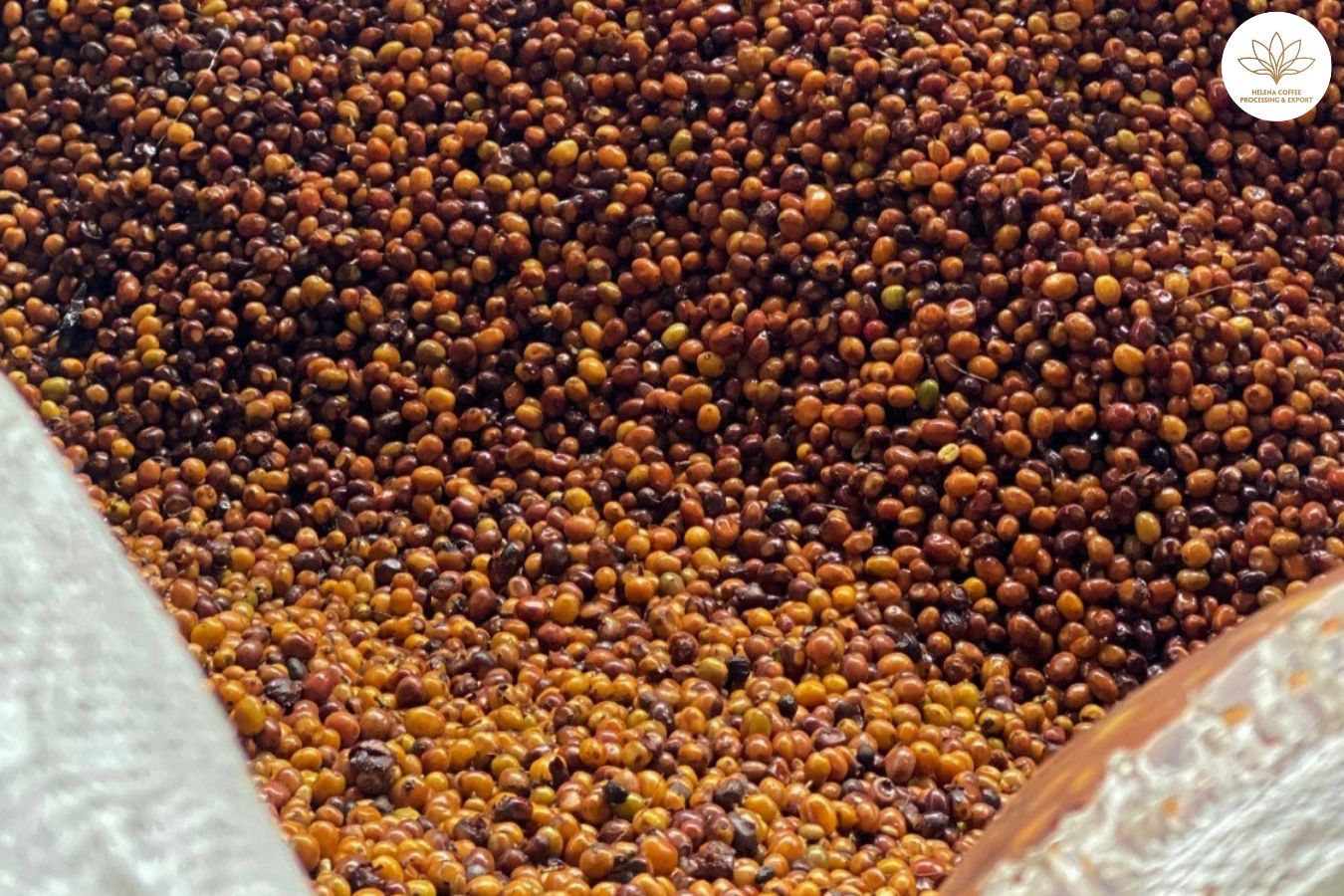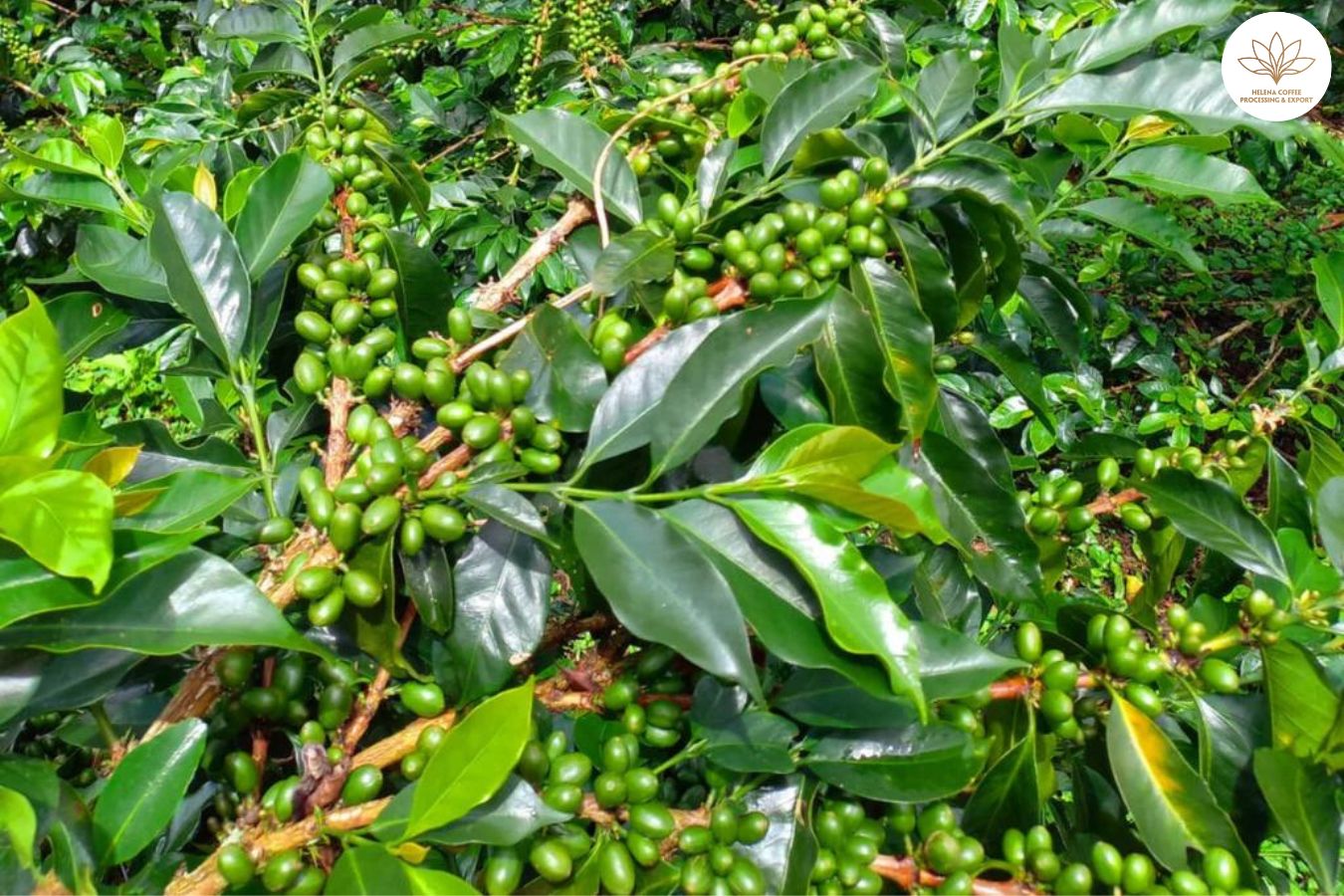
Infused vs co-fermented coffee: The specialty coffee industry’s fascination with avant-garde processing methods has become increasingly evident. In recent years, the influx of Infused vs. co-fermented coffee boasting unique processing methods such as anaerobic fermentation or carbonic maceration has surged, setting what seems to be a new benchmark within the trade.
Amidst this wave of inventive processing, a wider conversation about transparency has unfolded, particularly concerning the techniques producers use to craft novel flavors in Infused vs. co-fermented coffee
. A pivotal subject of debate among industry experts and aficionados alike is the emergence of flavored and infused coffees. In these instances, producers intentionally incorporate additional ingredients during theInfused vs. co-fermented coffee processing phase to imbue the green beans with specific taste profiles.
The terminology used to describe these processes—whether “flavored,” “infused,” or “co-fermented”—often appears to be used interchangeably, sometimes leading to confusion. But are there discernible differences among them?
To demystify this, I engaged with Rodrigo Sánchez Valencia of Aromas del Sur and Vicente Mejia of Clearpath Coffee, both of whom have considerable expertise in the realm of infused and co-fermented coffees.
Navigating the Nuances of Specialty Coffee Processing
Discerning the subtleties between flavored, infused, and co-fermented coffees is not straightforward due to the absence of standardized definitions in the industry. Hence, understanding these terms often depends on the insights of coffee experts.
An article in Perfect Daily Grind from March 2023 sought clarity by consulting with industry leaders like Saša Šestić of ONA Coffee and Project Origin, and Steven Restrepo, the Head of Coffee at Café de Colita.

Steven delineates flavored coffees as those typically produced through fermentation with the addition of yeasts, bacteria, and sometimes artificial flavorings. Saša contends that infusion might happen at any stage of the coffee’s journey, whereas Steven holds that infusion, particularly with artificial flavors, is a post-roasting process.
The concept of co-fermentation adds another layer. Ally Coffee, in a recent piece, describes co-fermentation as either adding elements to the initial ‘mother culture’ pre-processing or mingling them with the coffee during the fermentation phase. This description suggests co-fermentation might overlap with flavoring or infusing.
Yet, consensus is elusive.
Rodrigo Sánchez Valencia, a third-generation coffee producer from Aromas del Sur in Huila, Colombia, prefers not to use “infused” when talking about co-fermented coffees. He views co-fermentation as inherently more natural, hence a more desirable process than infusion, which he feels may connote the use of artificial additives. Co-fermented coffees, in his practice, gain their complexity from natural ingredients like fruits or other microorganisms during fermentation.
Delving into the Art of Co-Fermenting Coffee
The conversation surrounding infused and flavored coffees brings us to the intricate technique of co-fermentation.
Rodrigo embarked on a journey of exploration across the beer, wine, and dairy sectors to deepen his understanding of fermentation and the role of specific microorganisms in crafting distinctive flavors.
His discovery revealed a shared foundation among these industries: the prevalent use of saccharomyces microbes in the fermentation of beer and wine.
Rodrigo’s initial foray into co-fermentation paired coffee with wheat and a variety of fruits. He fine-tuned aspects such as fermentation duration, sugar concentration, and acidity levels, aiming for an optimal flavor balance – efforts that ultimately bore fruit.

“The term ‘co-fermentation’ was chosen for its clarity in communicating the distinctive flavors achieved through this more natural method,” Rodrigo clarifies.
The co-fermentation process unfolds in several stages:
- It begins with Rodrigo fermenting a “mother culture” for 190 hours, which comprises diverse microorganisms sourced from his own coffee plants.
- He then enriches this culture with a concoction of fruit juices, whole fruits, and a sweetening agent like molasses.
- This step not only amplifies the coffee’s inherent flavors but also boosts the overall sugar content, catalyzing the fermentation.
- Rodrigo gauges the sugar level (Brix) in the coffee cherries before they undergo a floatation process that weeds out less dense beans.
- The cherries are then depulped and introduced to a sealed tank containing the mother culture, where they remain for 180 hours.
- After this, the cherries are spread out to dry initially under the direct sun, followed by shaded conditions until they stabilize at a moisture content of 10% to 11%.
Assessing the Market for Innovative Coffee Processes
The specialty coffee community may not have reached a consensus on the precise definitions of infused, flavored, and co-fermented coffees, but Rodrigo observes a growing consumer interest in these innovative offerings.
“We’re poised to satisfy this emerging trend and deliver the unique coffee experiences our customers are seeking,” he asserts.
Still, producers like Rodrigo encounter challenges, one of which is persuading roasters to embrace these novel methods. He points out that while some roasters may approach co-fermented and infused coffees with caution, others display a keen curiosity to explore them.
Vicente Mejia, who founded Clearpath Coffee, a Colombian specialty coffee exporter, acknowledges that within the progressive specialty coffee industry, opinions are divided. Some purists question whether altering coffee through infusion or co-fermentation aligns with traditional standards of authenticity.
“These individuals may resist sampling such coffees or hesitate to present them to their clientele, arguing a breach of genuine coffee character,” Vicente remarks. He notes that experienced Q graders and roasters, with their sophisticated palates and extensive training, might perceive these coffees as lacking complexity.
“Yet, it’s important to remember that the ultimate consumers are the everyday coffee drinkers, many of whom are eager to explore coffees with more discernible, approachable flavor profiles,” he elucidates.
Embracing the Popularity of Co-Fermented and Infused Coffees
Consumer response to these innovative coffees is on the rise. Rodrigo points out significant interest from buyers in Asian markets, including Japan, Taiwan, China, Singapore, and Malaysia. Moreover, co-fermented coffees have enjoyed a warm reception in Middle Eastern countries such as the United Arab Emirates, Kuwait, Qatar, and Saudi Arabia.
On the other hand, Vicente shares that roasters who have ventured to try these coffees report positive experiences.
“Co-fermented coffees offer an engaging tasting journey for the end consumer, inviting them to savor flavor subtleties and engage with the stories behind the fermentation methods,” Vicente observes. “This is particularly appealing for those new to the coffee world, providing an inviting gateway to experiment with distinctive and exceptional coffees.”
Enhancing Specialty Coffee through Honesty and Clarity
The burgeoning appeal of infused and co-fermented coffees offers a unique avenue for innovation within the specialty coffee domain.
Vicente stresses that success in marketing these innovative coffees hinges on unwavering transparency. Misrepresenting the processing methods—as some may be tempted to suggest that such flavor profiles are achieved through conventional techniques or emerging technologies—can lead to significant issues.
“This approach is not just misleading; it can generate numerous complications,” he points out. “Honesty is imperative.”
Now more than ever, specialty coffee aficionados prioritize transparency and traceability. These elements are vital in effectively promoting and distributing infused and co-fermented coffees.
Additionally, the specialty coffee industry’s current lack of standardized descriptions for these products can create confusion or misinterpretation among consumers. While the industry has yet to agree upon standardized definitions for these coffee types, the precision and thoughtfulness of our language remain of paramount importance. Clear and accurate communication is essential for maintaining consumer trust and upholding the credibility of these innovative coffee experiences.
Clarifying the Specialty Coffee Vocabulary
In essence, while distinctions exist between infused and co-fermented coffees, the definitions remain nebulous and are often influenced by the varied perspectives of seasoned experts.
The creation of a standardized lexicon could alleviate the ambiguity surrounding the nuances of flavored, infused, and co-fermented coffees. The pivotal question, however, is who should have the authority to establish these definitions? It’s crucial that in seeking answers, we give precedence to the insights and experiences of the coffee producers themselves.
FAQS: